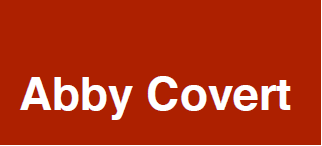Learn Information Architecture at Home
I have been traveling all over the world teaching information architecture to anyone who would listen to me. During the last few years I have also watched the rise of eLearning platforms. I became interested in the idea of eLearning because my goal is to spread information architecture education to as many people as possible, and what better way to reach people than in their own environment, on their own time (and in their pajamas.)
Also — little known fact about me — I homeschooled through my high school years. During those years I fell in love with the idea of self-paced education. While I went to school via fax machine (yes, you read that right) — I was an early adopter of what is now called “eLearning.”
When I started to evaluate my potential partners in developing an eLearning course on information architecture, Pluralsight won my heart. Here’s why:
- They have the most experience. With 12+ years of eLearning, full course development experience and more than 750,000 individual subscribers and 6000+ corporate clients, they know what they are doing — which is good because I didn’t!
- They curate carefully. Unlike many eLearning platforms, you can’t just create a course on Pluralsight. You have to audition and work with an editor and QA team on your course.
- They have a commitment to quality. When it comes to the development and production of the courses I was so impressed by what perfectionists they were. Cut to me recording the word “project” in five intonations so they could overdub a flubbed mention.
- They reach technology folks. While they are currently building out their design and strategy offerings, PluralSight got their start in delivering technology training. One of the audiences I see as most important to reach with information architecture education are those that are working in the technology space.
Thoughts on Course Development
I am quite used to teaching IA material in person which is an environment where I can assure an audience who can ask questions along the way and use their fellow classmates for exercises to reinforce the lessons learned. In the case of eLearning I had to adjust my teaching to not rely on those two things.
The course roughly follows my in-person curriculum but has been modified to provide more structured examples and exercises that can be done alone.
The subjects covered include:
- How we all practice information architecture everyday, sometimes without knowing what to call it
- How we can improve our work by controlling our vocabulary
- Why defining the relationships between things is critical in reaching our intention
- Why defining rules for different contexts and channels is crucial to meeting our users where they are
There are also little quizzes along the way to make sure students are grasping the material and at the end I have included a set of common questions I have gotten over the years in my workshops.
Overall I am quite proud of the result, but only you can let me know how we did. I am excited to get your feedback.
Feel free to use the free trial offer to check out my course and see if the rest of library is right for you (or your team) in the long term.
Huge shout out to my editor Thomas Winkley and the rest of the Pluralsight team that helped this all come together.
